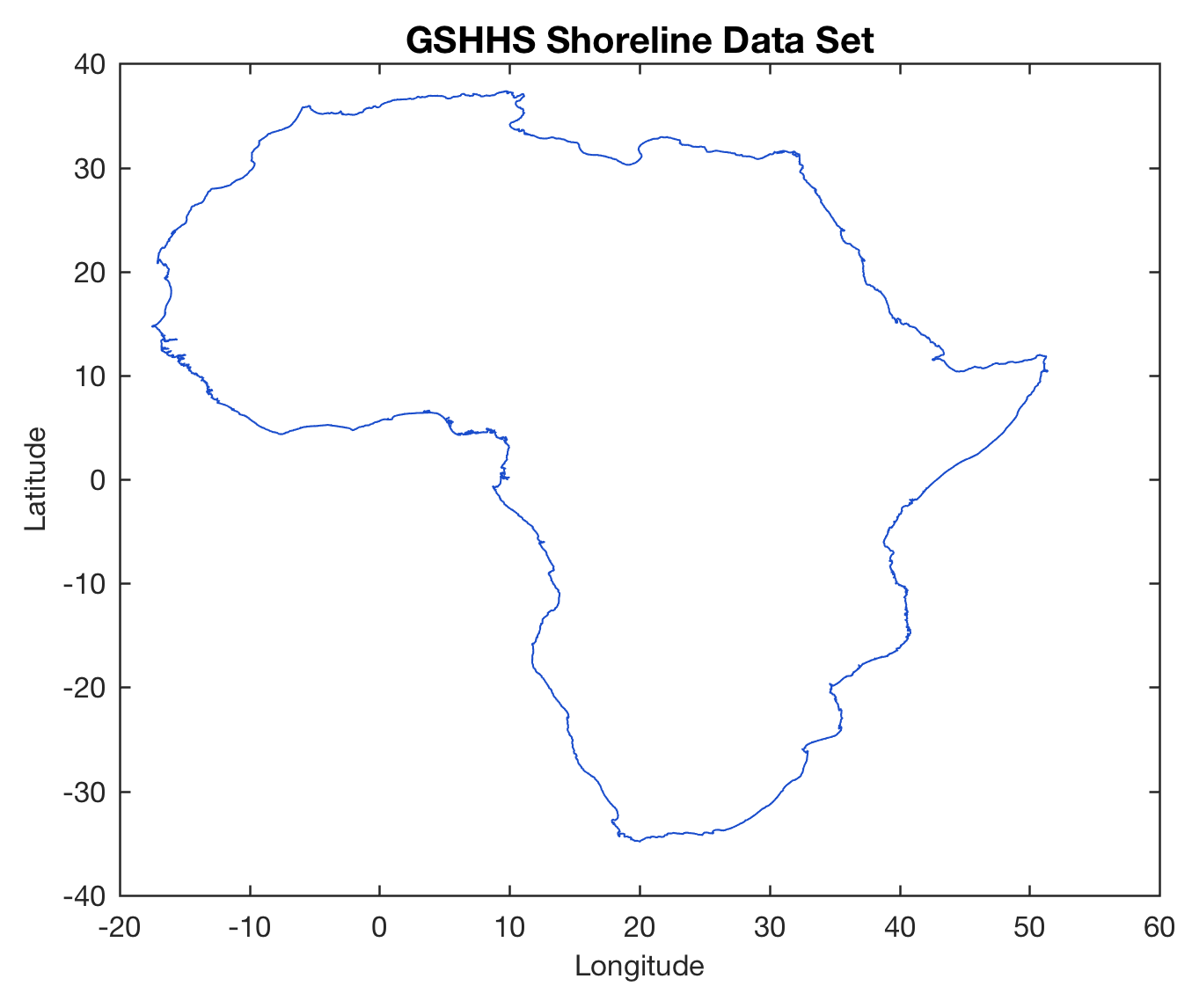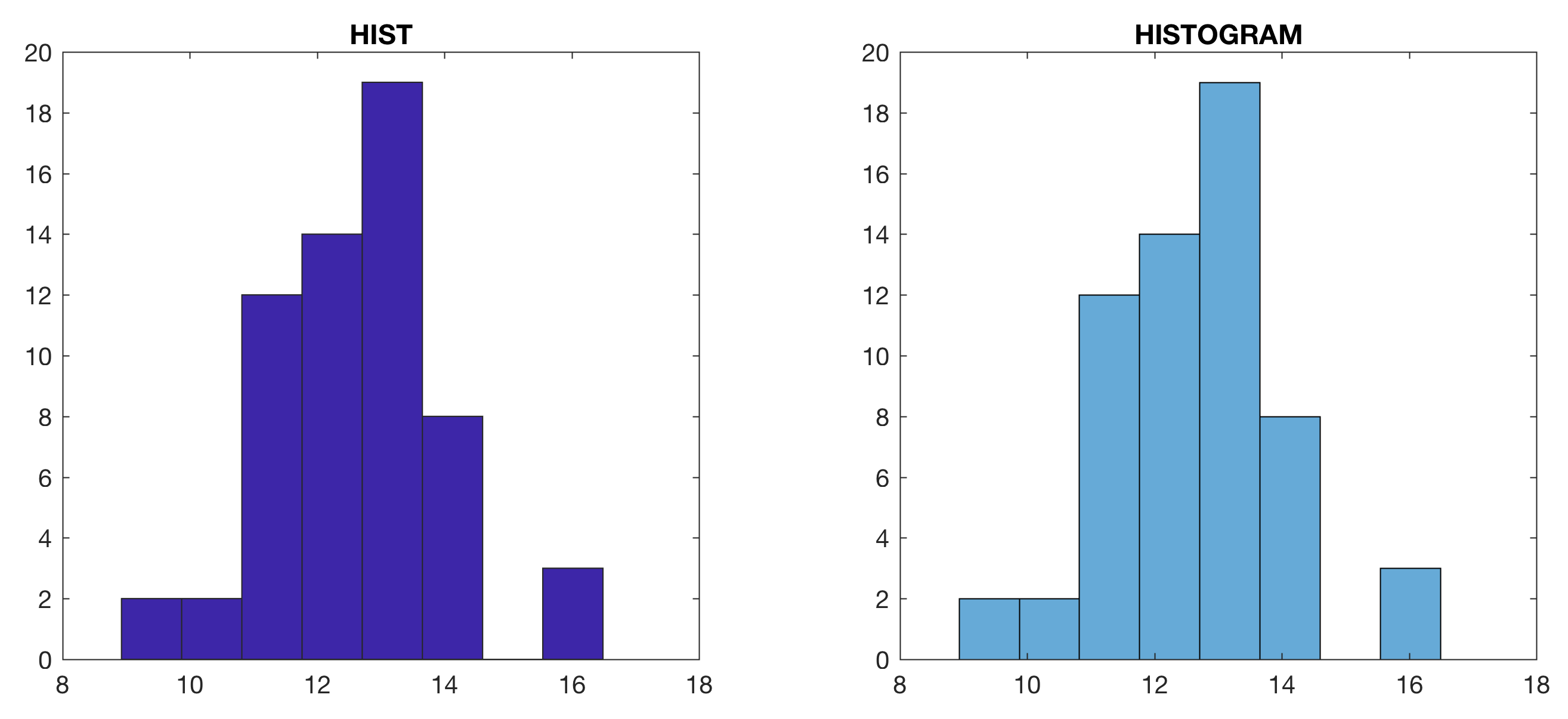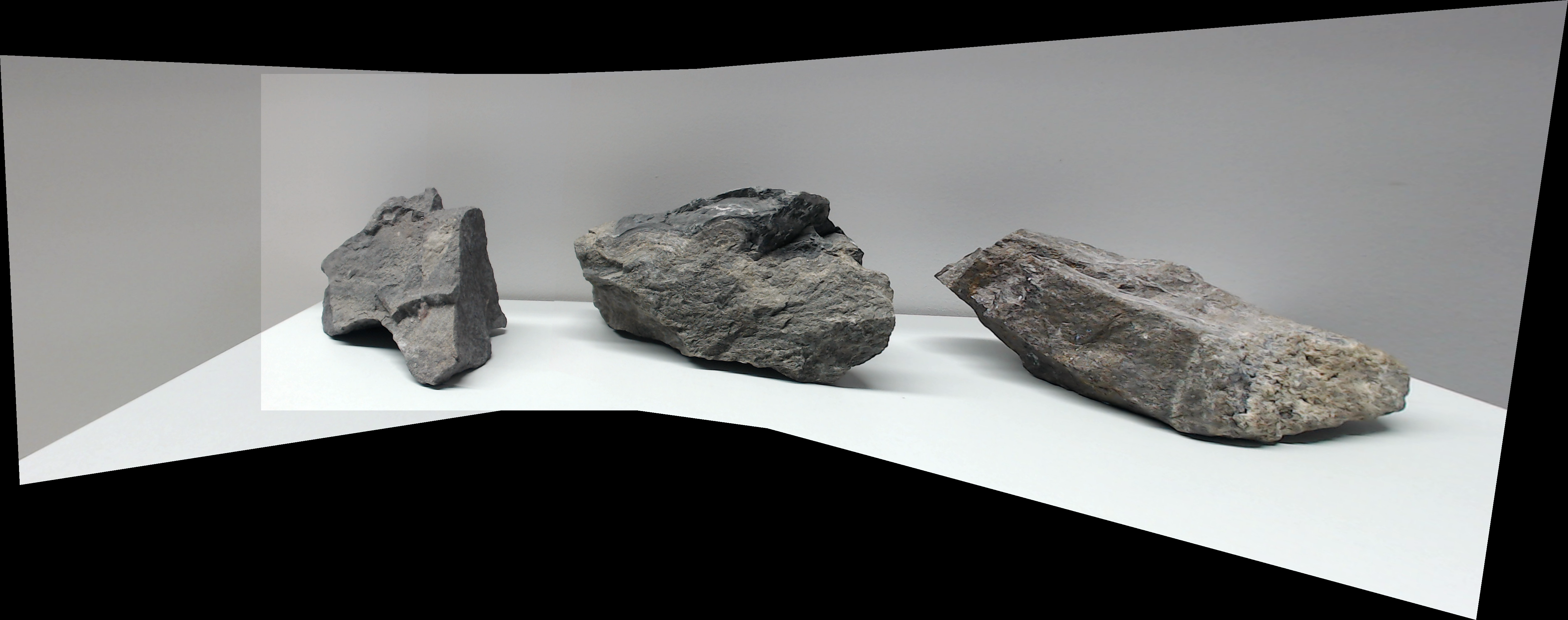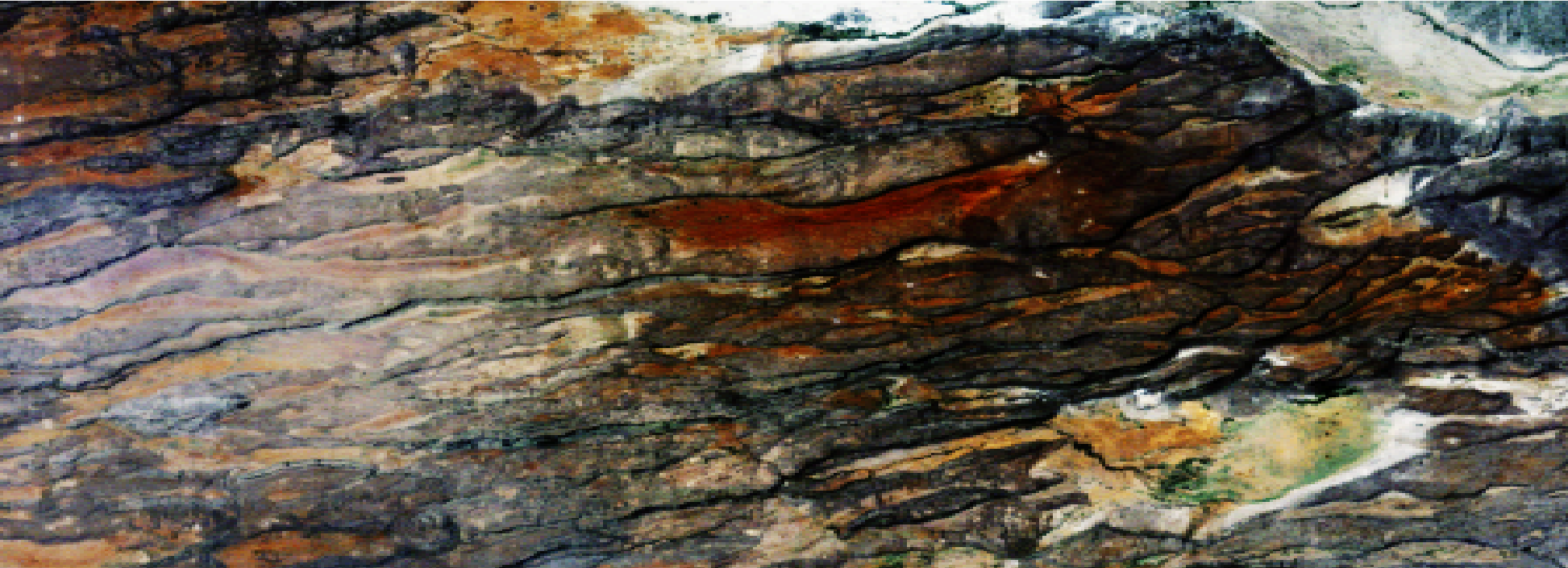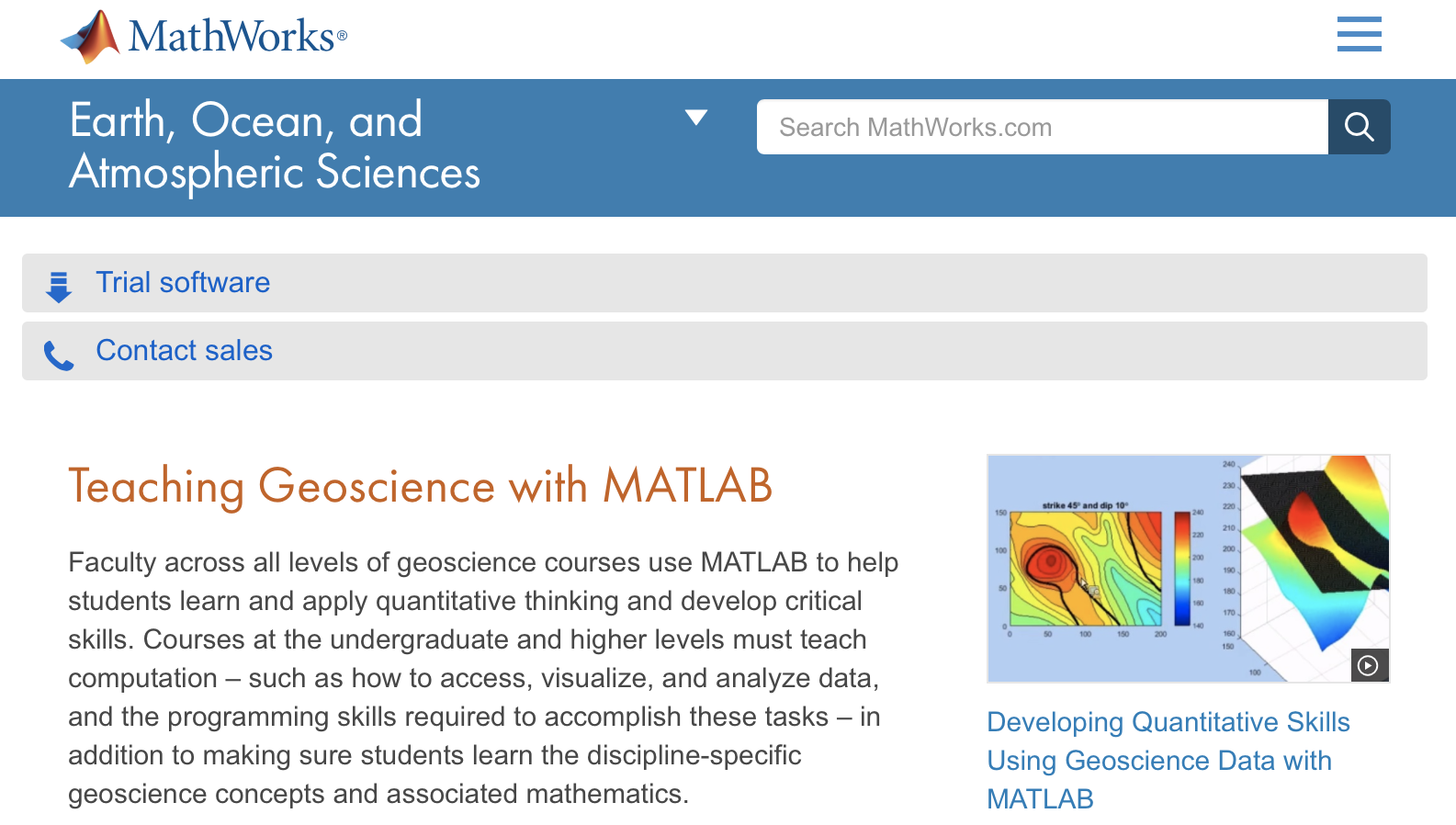
Lisa Kempler of MathWorks created a great compilation of geoscience teaching resources with MATLAB. These resources include published online curriculum materials designed for undergraduate course settings, but they are also applicable to graduate students learning computation for use in geoscience.

